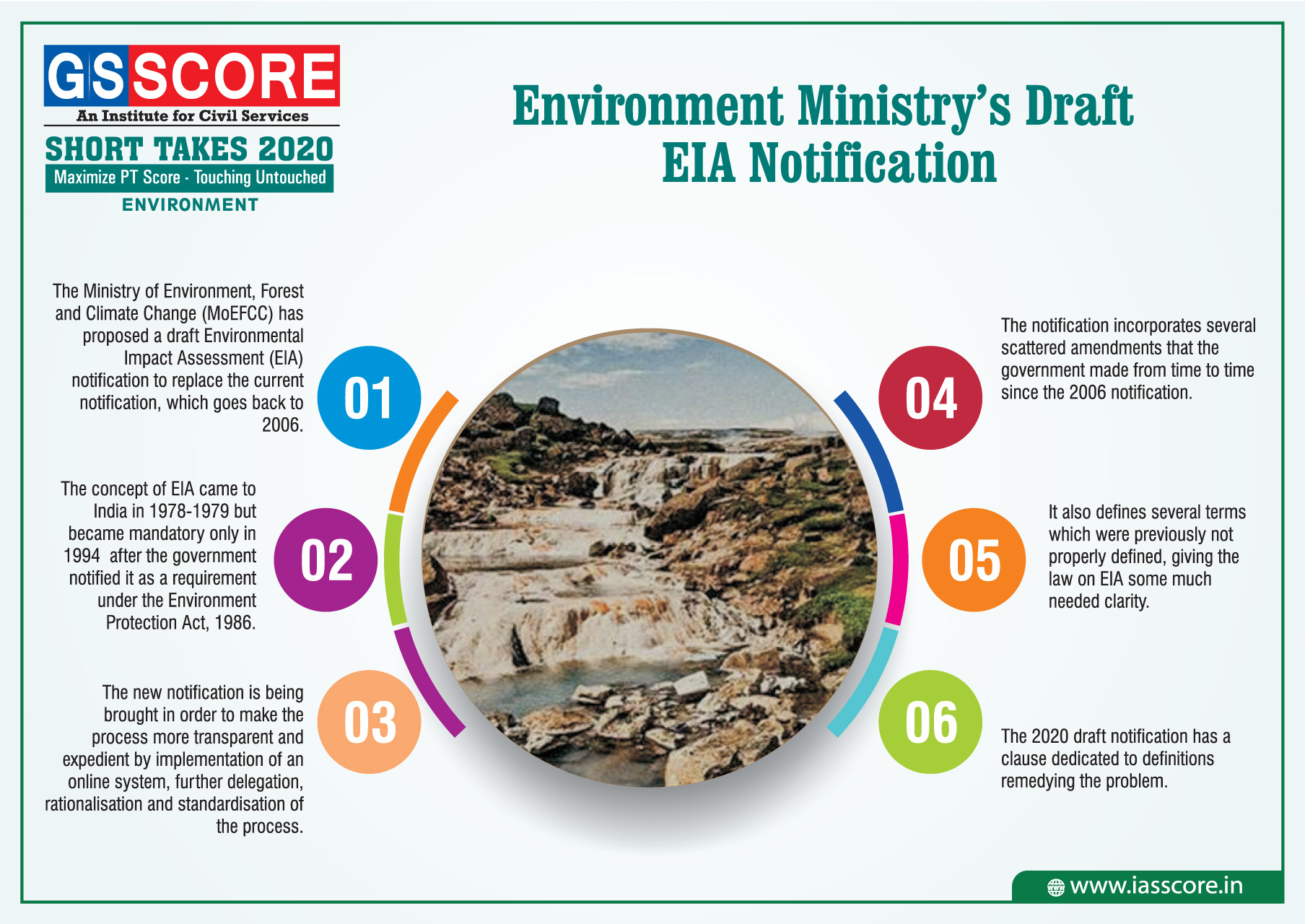History: Various Uprisings and Development under British Rule
Defence Procurement Procedure (DPP) 2020
Context
The government issued the draft Defence Procurement Procedure (DPP) 2020 on Friday, wherein it introduced "leasing" as another category to get defence equipment at affordable rates.
About
- The Defence Procurement Procedure(DPP), as it is commonly referred to, provides the guidelines for all capital acquisitions to be made by the Ministry of Defence including the Armed Forces.
- The DPP was first introduced in 2002 to provide probity, transparency and a structured procedure which would streamline the procurement of military hardware for the Armed Forces in a time bound manner.
- While the DPP has definitely succeeded in introducing probity and transparency and has greatly diminished the influence of shady arms dealers much to the benefit of the system and the Armed forces, the rigidity of the procedure has been detrimental to the acquisition process.
- The DPP has been a work in progress since its initiation in 2002 and though successive iterations in 2006, 2008. 2011, 2013 and 2016 have ‘improved’ upon the initial document; the results have flattered to deceive.
What’s in the new DPP?
- In the new DPP, a new category of "Buy (Global-Manufacture in India)" has been introduced, which is on number five priority-wise.
- Foreign vendors' products that have a minimum of 50 percent indigenous content will come under this new category.
- Long-term support: The DPP 2020 also envisions long-term product support -- which would be three to five years after the warranty period is over.
- To sustain and support platform/equipment through its operational life-cycle, the service headquarters will ensure that product support requirements for at least 3 to 5 years beyond the warranty period will be procured along with the main equipment.
- Promoting domestic industries: To facilitate greater participation of the Indian industry and develop a robust defence industrial base, use of indigenous raw materials, special alloys and software has been incentivised.
- Price variation clause: Moreover, a "price variation clause" has been introduced that will be applicable to all cases where the total cost of contract is more than Rs 1,000 crore and the delivery schedule exceeds 60 months.
- Leasing: Leasing is introduced as a new category for acquisition, in addition to the existing 'Buy and Make' category to substitute huge initial capital outlays with periodical rental payments.
- Leasing is permitted under two categories i.e lease (Indian), where the lessor is an Indian entity and the owner of the assets, and lease (global), where the lessor is a global entity.
Significance of DPP:
- Empowering private industries: The DPP-2020 is aligned with the vision of the government to empower the private industry with the ultimate aim of turning India into a global manufacturing hub.
Promoting ‘Make in India’ initiative: Moreover, the indigenous content stipulated in various categories of procurement was enhanced to support the "Make in India" initiative.
Green Credit Scheme
Context
The Forest Advisory Committee has approved the ‘Green Credit Scheme’ that could allow “forests” to be traded as a commodity. If implemented, it allows the Forest Department to outsource one of its responsibilities of reforesting to non-government agencies.
What is the ‘Green Credit Scheme’?
- The proposed ‘Green Credit Scheme’, as it is called, allows agencies, they could be private companies, village forest communities, to identify land and begin growing plantations.
- After three years, they would be eligible to be considered as compensatory forest land if they met the Forest Department’s criteria.
- An industry needing forest land could then approach the agency and pay it for parcels of such forested land, and this would then be transferred to the Forest Department and be recorded as forest land.
- The participating agency will be free to trade its asset, that is a plantation, in parcels, with project proponents who need forest land.
- Once finalised, the scheme will overhaul the compensatory afforestation process by accrediting private or public-private partnership companies to raise plantations near reserved forests which can be bought in lieu of projects involving forest diversion.
- If the company raising the plantation doesn’t wish to trade it, it can retain it and harvest the timber once ready.
Understanding the current system:
- Under the Forest Conservation Act 1980, each time forest land is diverted for non-forest purposes like mining or industry, the project developer is supposed to identify land and pay for planting forests over an equal area of non-forest land, or when that is not available, twice the area of degraded forest land.
- It also must pay the State Forest Department the current economic equivalent, called Net Present Value, of the forest land.
- This money currently gets collected under the Compensatory Afforestation Fund.
- It’s then the Forest Department’s responsibility to grow appropriate vegetation that, over time, would grow into
- Industries have often complained that they find it hard to acquire appropriate non-forest land, which has to be contiguous to an existing forest.
- Nearly 50,000 crores had been collected by the Centre over decades, but the funds were lying unspent because States were not spending the money on regrowing forests.
- The Supreme Court intervened, a new law came about with rules for how this fund was to be administered.
- About 47,000 crores had been disbursed to States until August, but it has barely led to any rejuvenation of forests.
Concerns:
The proposed scheme has raised some concerns among green activists, as given below:
- The threat to agricultural land: The money involved will be discussed between the private agencies raising these plantations and the project proponent. If the economic value of these plantations becomes lucrative, it can pose a serious threat to agricultural land, by diverting the latter for plantations.
- Uncontrolled circulation of money: In the scheme, the Compensatory afforestation (CA) money can be exchanged between the private agency and the project proponent. It can lead to a situation where money keeps circulating within a private company.
- Issues of ambiguity: The scheme does not provide details about the ownership over the land and where the land will be sourced from.
- Destruction: Concerns are also being raised that this would lead to the privatisation of forests and give impetus to their destruction.
Significance of the Scheme:
- Proper monitoring: There would be monitoring of plantations, which wasn’t done earlier and make it easy for individuals to plant and harvest trees, which earlier was difficult due to the provisions of the Forest (Conservation) Act, 1980.
- Encouraging plantation: The scheme will encourage plantation by individuals outside the traditional forest area.
- Meeting environmental goals: Furthermore, it will help in meeting international commitments such as sustainable development goals and nationally determined contributions.
BrahMos cruise missiles
Context
Thailand in talks with India to buy BrahMos cruise missiles.
About
- In possibly the first sale of BrahMos supersonic cruise missiles to another country, Thailand.
- As part of the expanding defence cooperation between the two countries, Thailand has made a request for repair and refurbishing their Dornier maritime patrol aircraft.
- Discussions are on to integrate Thailand into India’s coastal surveillance radar chain network.
- The inaugural India, Thailand and Singapore trilateral naval exercise announced at Shangri-La dialogue is scheduled to be held later this year.
- The two navies already conduct a Coordinated Patrol (CORPAT) and a new bilateral exercise is also in the works apart from the trilateral.
- As members of the Indian Ocean rim association (IORA) and Indian Ocean Naval symposium (IONS), navies of India and Thailand are working closely in the areas of disaster risk management, maritime security safety, information sharing and interoperability.
About BrahMos cruise missiles.
- The BrahMos is a medium-range ramjet supersonic cruise missile that can be launched from submarine, ships, aircraft, or land.
- It is the fastest supersonic cruise missile in the world.
- It is a joint venture between the Russian Federation's NPO Mashinostroyeniya and India's Defence Research and Development Organisation (DRDO) who together have formed BrahMos Aerospace.
- It is based on the Russian P-800 Oniks cruise missile and other similar sea-skimming Russian cruise missile technology.
- The name BrahMos is a portmanteau formed from the names of two rivers, the Brahmaputra of India and the Moskva of Russia.
- It is the world's fastest anti-ship cruise missile in operation.
Peasant and Tribal Movements Under British Rule
- The British East India Company, a trading organization, slowly and gradually through wars and diplomacy transformed itself into a political power between 1757 and 1857.
- The British power made India a colony of the British and established colonial rule in India and introduced far-reaching changes into administrative, legal, social and religious spheres.
- Colonialism of the British and introduction of British values had shaken the Indian society. While this transformation was taking place, Indians did not keep quiet as passive spectators helplessly but the subaltern groups of peasants and trial’s expressed their resentment through popular resistance, movements or civil disturbances mostly which were localized, sporadic, isolated and unorganized.
- These popular resistance movements reflect a certain kind of currents of political and social consciousness which influenced them to fight against the authority of the British to regain their identity and interests of theirs, prior to the British annexation of India. Sumit Sarkar points out that in the past two decades intense research on civil disturbances makes it clear that Pax Britannica was largely a myth and we notice the revolts of the predominantly lower classes in social composition which are called subaltern groups and a study of this aspect is called ‘Towards a History from Below’.
- Katherine Gough, an anthropologist, listed 77 per cent of peasant uprisings and classified them as ‘restorative’, ‘religious’, ‘social banditary’, and ‘terrorist vengeance’.
- It was recorded that the series of civil rebellions, which run like a thread through the first one hundred years of the British rule were led by impoverished Zamindars, landlords and poligars but the backbone of the rebellions, their mass base and striking power came from the rack rented peasants, ruined artisans, and demobilized soldiers.
- It was further observes that these sudden localized revolts often took place because of local grievances, although for periods they acquired a broad sweep, involving armed bands of a few hundred to several thousands.
- It was also agreed that the very foreign character of the British rule hurt the pride and made them rise in revolt to expel the foreigner from their lands. In Bengal and Bihar, it was noticed that more than fifty major rebellions apart from hundreds of minor ones between 1756 and 1856.
- In the series of uprisings of the period, the Sannyasi Rebellion of 1763-1800 needs to be mentioned as the first one.
- The East India Company’s official records refer to this rebellion of northern Bengal. The targets of this group of sanyasis and fakirs were grain stocks of the rich and government officials.
- The rebellious sannyasis by adopting the guerilla techniques of fighting, also looted the local treasuries. They went to the extent of establishing an independent government in Bogra and Mymen Singh.
- One feature to be noted is the equal participation of Muslims and Hindus in it. Manjushah, Musashah, Bhawani Pathakand Debi Chaudhurani were some of the important leaders of this rebellion. Till 1800, the conflict between the British forces and the sannyasis and fakirs – became a common feature.
- The Khasis, a primitive tribe, a resident of Jaintia and Garo hills in Assam also rebelled against the British authority.
- They came into contact in 1765 and since then hostilities continued between the Khasis and the British and it provided impetus to similar risings among the Singhas in 1890.
- The English Captain Neufvilie succeeded in suppressing the revolt. The revolts of the chief of Kapachor Akas, the Nagas and Kukus took place respectively in 1835, 1849 and 1826-1849. Mundas, a tribe of Chota Nagpur also revolted against the British in 1831.
- The primary reason for the revolt of the Mundas was the new policy of farming for outsiders and the revenue and judicial policies. It was suppressed by the British with the massive support of the British military force.
- The peasants of Rangapur and Dinajpur districts of Bengal rose in revolt in the year 1783 against the harsh and inhuman attitude of Debi Singh, the revenue contractor.
- It is because he and his agents created a reign of terror in these districts by beating and flogging the peasants.
- The peasants appealed to the government, seeking justice but the silence and apathy of the government made the peasants revolt under the leadership of They formed the government of their own and stopped payment of revenue and the government with great difficulty suppressed the revolt.
- Between the period of 1818 and 1831, the Bhils of Khandesh ravaged the plains to show their anger against the occupation of their territory by the British in 1818.
- In spite of the use of force and conciliatory measures, the Bhils could not be suppressed. In 1830-31, the peasants of Nagar and other provinces rose in revolt under the leadership of Sardar Malla, the son of an ordinary ryot of Kremsi. They defied the authority of the ruler of Mysore and ultimately the British forces suppressed this rebellion and the territory of Mysore went into the hands of the British.
- In 1830-31, the Kols of Singabham, the tribals of Bihar opposed the British occupation of Singabham and rebelled against the British because their land was occupied by plains people, by which they were made to forgo their livelihood.
- The rebellion was active in the areas of Ranchi, Hazaribagh, Palamaw and Manbhum. Though they gained victory initially, ultimately they were defeated by the British militia. Between 1838 and 1851, the Foraizi sects founded by Haji Shariatullah of Faridpur rebelled against the oppression of the landlords and the British.
- The Fazis opposed the British legal system and maintained the village courts to settle their disputes. They opposed the British and the Zamindars for their excesses but they too were suppressed by the British and the Zamindars in the end and Dudi Miyan, the leader of the Fajai sect was imprisoned.
- Between 1836 and 1854, the Mappilla uprising of Kerala posed a great challenge to the British administration.
- These are the descendant of the Arabs and converted Muslims. Majority of them earned their living by working as daily agricultural labourers, petty traders and fishermen. They rebelled against the British for their brutal behaviour.
- The reasons for Mappilla rebellion are the transfer of Zamin to an independent owner, over-assessment, illegal taxes, forceful eviction from land and hostile attitude of the government.
- The religious leaders kindled unity among the Mappillas and they rose against the British government. Between 1836 and 1854, there were 22 uprisings against the government in Malabar and the participants were from the lower strata of society.
- It was a prolonged movement, wherein with great difficulty, the government subdued the Mappilla movement. The last of revolts before the 1857 great revolt was the Santhal rebellion of 1855-56.
- The Santhals inhabited the districts of Birbhum, Banlarua, Murshidabad, Palkur, Damka, Bhaglapur and Purnea.
- Their area is known as Daman-i-kosh or Santhal Paragana.
- As the plainsmen in collaboration with the local Zamindars began to settle in their area, it became inevitable to the Santhals to rebel for their motherland and livelihood.
- Interestingly, the Santhals, the tribals were supported by non-tribals belonging to the lower strata. Finally, in the end the superior arms and armaments of the British succeeded.
- A critical examination of the pre-1857 peasant and tribal uprisings reveal that they did not emerge in a ‘full blown form’. It is because the consciousness of the insurgence and rebellion was limited in perspective and mostly it was shaped by their vision of the past and what they have forgone by the annexation of the British.
- We may say that the urge to recover their past provided them inspiration to struggle to regain that past from the newly established political power.
- Here the past refers to their identity as reflected in their livelihood and the land on which their forefathers have been living for ages. What this movement of peasants and tribal risings lacked is the awareness of the need for integrating consciousness of all those adversely effected by the British colonial policies.
- No doubt, all the peasants and tribal uprisings are localized and isolated, but they served as the forerunners for the great uprising of 1857 which reflected the deep frustration, agony and anger of all sections of the effected people which shook the fabric of the British regime to the core.
Deserted Thai beaches lure rare turtles to build most nests in 20 years

Environment Ministry’s Draft EIA Notification

COP26 climate summit postponed due to COVID-19

Study of Community Forest Resources by Ministry of Tribal Affairs
.jpg)
No ice makes it a tough winter for seal pups in Baltic Sea
.jpg)


